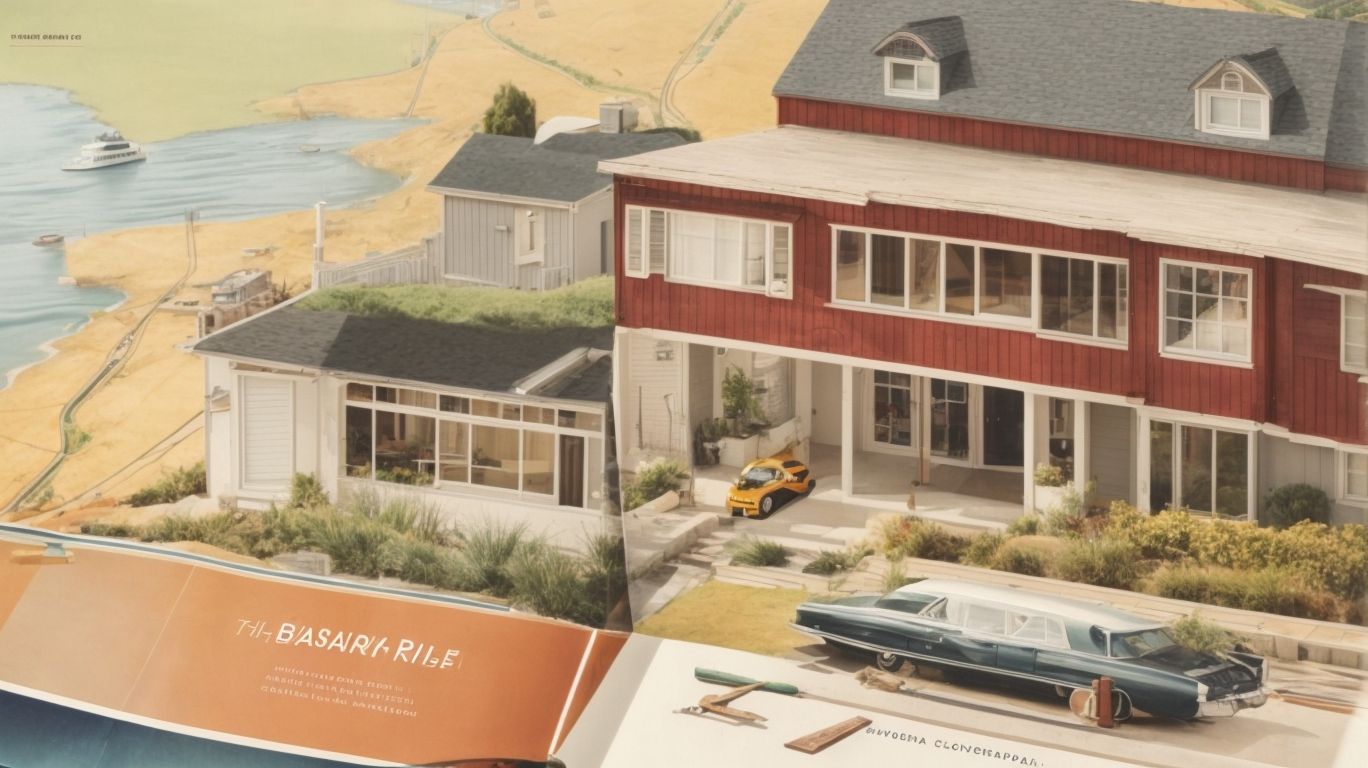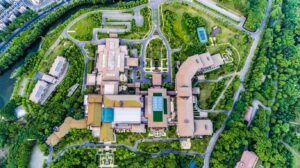
Navigating Bay Area Permits: A Homeowner’s Guide to Second Story Addition Regulations
Are you considering adding a second story to your Bay Area home? Before you start construction, it’s crucial to understand the permitting process and regulations that govern such projects. From zoning regulations to building codes and historic preservation guidelines, there are several factors to consider.
In this article, we will break down the steps to obtain a permit for a second story addition, common challenges homeowners face, and how to overcome them. Let’s dive into the world of Bay Area permits for second story additions.
Understanding Bay Area Permits for Second Story Additions
Understanding Bay Area permits for second story additions is crucial for homeowners embarking on home improvement projects, as it involves complying with local regulations, building codes, and zoning laws.
By obtaining the necessary permits, homeowners not only ensure the safety and quality of their construction projects but also prevent any legal issues that may arise from non-compliance. Navigating the permit process involves thorough research into the specific ordinances and guidelines set forth by local authorities, which vary depending on the location within the Bay Area. Adherence to building codes and zoning laws is essential to avoid delays, fines, or even having to undo construction work that does not meet the required standards.
What Are the Regulations for Second Story Additions in the Bay Area?
When planning second story additions in the Bay Area, homeowners must consider various regulations, including zoning laws, building codes, historic preservation guidelines, and environmental regulations.
- Zoning laws in the Bay Area dictate the allowable uses of land, including restrictions on building height, setbacks from property lines, and density limits.
- Building codes specify structural and safety requirements to ensure the newly added second story meets construction standards.
- Historic preservation guidelines aim to protect the architectural character of designated historic districts, potentially influencing the design and materials used in the addition.
- Environmental regulations focus on minimizing the impact of construction on the surrounding ecosystem, often requiring permits for tree removal, stormwater management plans, and compliance with energy efficiency standards.
Zoning Regulations
Zoning regulations play a crucial role in the approval process for second story additions in the Bay Area, requiring homeowners to adhere to specific guidelines and obtain necessary neighborhood approvals.
These regulations are put in place to ensure that any architectural changes to residential properties are in line with the overall aesthetics and safety of the neighborhood. Homeowners must navigate through a complex web of rules and regulations, often facing challenges such as height restrictions, setback requirements, and parking considerations.
Understanding these zoning restrictions and seeking professional guidance can significantly improve the chances of a successful project approval. By working closely with local planning departments and engaging with neighbors to address any concerns, homeowners can proactively overcome zoning obstacles and move forward with their second story addition plans.
Building Codes
Adherence to building codes is essential for second story additions in the Bay Area, necessitating the involvement of structural engineers to ensure compliance with safety and construction standards.
These codes lay the foundation for ensuring that structural integrity is maintained, safeguarding the occupants and the overall stability of the building. By working closely with architects and contractors, structural engineers play a pivotal role in not only designing but also overseeing the implementation of projects that adhere to these regulations. Projects that fail to meet these standards risk permit violations, delays, and potential safety hazards. Therefore, thorough understanding and application of building codes are paramount in the successful execution of second story additions.
Historic Preservation Guidelines
Navigating historic preservation guidelines is critical for second story additions in the Bay Area, often involving review processes by design review boards to protect architectural integrity.
These guidelines play a crucial role in maintaining the historical significance of buildings and neighborhoods, ensuring that any new construction respects the original design and character. Design review boards carefully evaluate proposed projects to ensure they align with the existing architectural styles and overall context of the area. This process helps in preserving the cultural heritage and aesthetic appeal of the region.
To successfully navigate these requirements, homeowners and architects must pay close attention to details such as scale, materials, and rooflines, in order to secure approvals that meet the standards set by historic preservation guidelines.
Environmental Regulations
Complying with environmental regulations is essential for second story additions in the Bay Area, often necessitating environmental impact assessments to mitigate potential ecological impacts.
Ensuring compliance with environmental regulations is crucial not just for legal purposes, but also for protecting the delicate ecosystems surrounding residential areas. Homeowners play a significant role in this process by working closely with environmental consultants to conduct thorough impact assessments. These assessments help identify potential risks to wildlife, water sources, and air quality, allowing for the implementation of appropriate mitigation measures. By actively participating in these assessments and regulatory processes, homeowners can ensure that their projects are environmentally responsible and sustainable for the community.
What Are the Steps to Obtain a Permit for a Second Story Addition?
Obtaining a permit for a second story addition in the Bay Area involves a multi-step process that includes the permit application, adherence to local ordinances, engagement with the planning department, and consideration of property development guidelines.
- After submitting the permit application, homeowners must ensure that their plans comply with the specific building codes and zoning regulations set forth by the local authorities. This may involve detailed inspections of the property to confirm that the proposed addition meets all safety and structural requirements.
- Interactions with the planning department are crucial to address any questions or modifications requested during the review process. It’s essential for property owners to proactively communicate with the officials and respond promptly to any feedback or requests for additional information.
- Understanding the local ordinances and property development guidelines can be challenging, but seeking professional assistance or consulting with experienced architects and contractors can help navigate these complexities effectively.
Determine Your Project Scope
Defining the project scope is the initial step in obtaining a permit for a second story addition, involving considerations of renovation guidelines and project parameters.
Homeowners must clearly outline their project objectives, establishing what they aim to achieve with the addition, whether it’s creating more living space or adding bedrooms.
It is essential to set specific timelines for different project phases to ensure a smooth renovation process. Establishing a realistic budget is crucial to avoid unexpected costs and delays, aligning with financial constraints while aiming for quality outcomes.
By having a detailed plan in place, homeowners can streamline the permit application process and mitigate potential setbacks, ultimately leading to a successful second story addition project.
Hire a Design Professional
Engaging a design professional is essential for second story additions in the Bay Area, as they can create architectural drawings that align with permit requirements and project specifications.
These experts possess the knowledge and skills needed to navigate the complex permit application process seamlessly. By crafting detailed architectural drawings, they not only ensure that the proposed addition complies with building codes but also aligns with the homeowner’s vision for the project.
Effective collaboration between homeowners and design professionals is crucial to address any potential issues early on and streamline the approval process. This partnership fosters a transparent and efficient workflow, leading to successful permit acquisition and a smooth execution of the second story addition project.
Submit Permit Application
Submitting a thorough permit application is essential for second story additions in the Bay Area, involving considerations of permit restrictions and documentation requirements.
When applying for a permit for a second story addition, homeowners must gather all necessary documents such as detailed construction plans, property surveys, structural engineer reports, and energy compliance certificates. These documents help demonstrate compliance with building codes and zoning regulations.
Homeowners should be aware of permit restrictions such as height limitations, setback requirements, and historic preservation guidelines that may impact their project. To expedite the approval process, it is advisable to present a comprehensive permit application package that addresses these restrictions effectively.
Wait for Approval
Upon submission of the permit application, homeowners must wait for approval from the relevant authorities, ensuring compliance with permit regulations and project specifications.
During this waiting period, it is crucial for homeowners to be proactive in addressing any potential issues that may arise.
Regular communication with the permitting authorities can help clarify any doubts or provide additional information that may be required. Checking in periodically can also help expedite the approval process.
Once the permit is secured, it is vital to maintain strict compliance with all regulations throughout the project to avoid any costly delays or penalties.
Homeowners can consider hiring professionals to oversee the construction and ensure that all work is carried out according to the approved plans.
What Are the Common Challenges Homeowners Face When Obtaining Permits?
Homeowners often encounter common challenges when obtaining permits for second story additions in the Bay Area, ranging from navigating complex regulations to addressing zoning restrictions and building code requirements.
These challenges can be compounded by the need to address environmental concerns and the potential for delays or rejections from permit authorities. To help overcome these obstacles, homeowners can benefit from seeking the assistance of experienced permit expeditors who have in-depth knowledge of local regulations and can guide them through the process. Thorough research and preparation before submitting permit applications can ensure that all necessary documents and information are included, increasing the likelihood of a successful approval.
Navigating Complex Regulations
Navigating the complex web of regulations governing second story additions can be daunting for homeowners, requiring clarity on the permit process flowchart and compliance with legal requirements.
Homeowners often face challenges when trying to decipher the intricate rules and regulations surrounding the addition of a second story to their property. To simplify the permit application process and ensure adherence to regulatory guidelines, it is crucial for individuals to familiarize themselves with the specific requirements set forth by their local municipality.
By seeking advice from experienced professionals, such as architects or contractors familiar with permit procedures, homeowners can gain valuable insights into navigating the complexities of the system. Keeping meticulous records and documentation throughout the application process can also help in demonstrating compliance with the necessary regulations.
Dealing with Zoning Restrictions
Addressing zoning restrictions is a common challenge for homeowners seeking permits for second story additions, often requiring variance requests to deviate from standard zoning laws.
Navigating these complexities involves understanding local zoning codes and regulations, identifying specific restrictions relevant to the proposed project, and submitting a detailed variance request outlining the reasons for the deviation. Homeowners should initiate early communication with the local planning department to discuss the project scope and potential challenges.
Building a strong case for the variance request is crucial, emphasizing how the addition will enhance the property without causing significant negative impacts on the neighborhood. Being prepared with architectural plans, environmental impact studies, and community support can strengthen the homeowner’s position when presenting their case to the zoning board or planning commission.
Engaging with professional architects, attorneys, or consultants experienced in dealing with zoning issues can provide valuable guidance throughout the application process. By proactively addressing zoning challenges and effectively communicating with local authorities, homeowners increase their chances of securing the necessary approvals for their second-story additions while adhering to zoning laws.
Meeting Building Code Requirements
Ensuring compliance with building code requirements poses a significant challenge for homeowners planning second story additions, necessitating the expertise of structural engineers to meet safety and construction standards.
Structural engineers play a crucial role in assessing the existing structure and designing the necessary reinforcements to support the added load of a second story.
Common pitfalls in meeting building code specifications include inadequate structural analysis, improper material selection, and insufficient documentation.
To address these challenges effectively during the permit application process, homeowners should consult with experienced architects and engineers early on, involve them in the planning stages, and prioritize open communication to ensure all requirements are met.
By proactively addressing these issues, homeowners can streamline the approval process and avoid costly delays or rejections.
Addressing Environmental Concerns
Addressing environmental concerns is a critical challenge for homeowners undertaking second story additions, often requiring environmental impact assessments to mitigate ecological impacts.
These impact assessments are essential tools for evaluating the potential effects of construction activities on the environment, including air and water quality, soil health, wildlife habitat, and overall ecosystem sustainability.
By engaging with relevant stakeholders such as environmental consultants, local authorities, and community groups, homeowners can gather valuable insights and perspectives to enhance their environmental planning process.
It is crucial for homeowners to adhere to environmental regulations and guidelines throughout the project lifecycle to minimize negative impacts and promote sustainable building practices.
How Can Homeowners Overcome These Challenges?
Homeowners can overcome the challenges of obtaining permits for second story additions in the Bay Area by enlisting the expertise of experienced contractors who can navigate the complexities of the permit process.
These seasoned professionals possess the knowledge and insights needed to ensure a smooth permit application process, saving homeowners valuable time and minimizing potential delays.
Working with permit expeditors can further expedite the approval process, as they understand the intricacies of local regulations and can help streamline the necessary paperwork.
By proactively planning for potential obstacles and seeking guidance from experts in the field, homeowners can enhance their chances of securing permits efficiently and setting the stage for a successful second story addition project.
Hire an Experienced Contractor
Engaging the services of an experienced contractor is instrumental in navigating the complexities of obtaining permits for second story additions, ensuring adherence to renovation guidelines and construction regulations.
Such contractors possess the expertise to interpret renovation guidelines accurately, enabling seamless planning and execution of projects. Their in-depth understanding of construction regulations ensures that all work complies with legal requirements, preventing costly delays or issues down the line.
Experienced contractors have established relationships with local authorities, which allows them to expedite the permit process efficiently. When selecting a contractor, homeowners should prioritize reputation, experience, and certifications. Conducting thorough background checks, reviewing past projects, and seeking recommendations can help homeowners make informed decisions to ensure successful outcomes.
Work with a Permit Expeditor
Collaborating with a permit expeditor can streamline the permit acquisition process for second story additions, ensuring compliance with regulatory requirements and expedited approvals.
These professionals play a crucial role in navigating the complex landscape of building regulations and codes, saving homeowners valuable time and effort. By partnering with permit expeditors, homeowners can benefit from their expertise in completing and submitting accurate documentation, managing communication with local authorities, and addressing any compliance issues promptly.
This proactive approach not only accelerates the project approval process but also minimizes the risk of delays or rejections. Effective engagement with permit expeditors involves clear communication, providing all necessary project details, and staying informed about the progress of the permit applications. Homeowners can effectively manage the permit application timeline by setting realistic expectations, adhering to deadlines, and promptly addressing any additional requirements or revisions requested by regulatory authorities.
Permit expeditors serve as invaluable allies in ensuring that all necessary permits are obtained efficiently and in compliance with local regulations.
Be Proactive and Prepared
Taking a proactive and prepared approach to the permit process is essential for homeowners undertaking second story additions, requiring diligence in fulfilling homeowner responsibilities and ensuring timely permit renewal.
- To streamline the permit application journey, homeowners should maintain clear communication with their contractor and local authorities, staying informed about specific requirements and timelines.
- Creating a comprehensive checklist of documentation needed, such as architectural plans and structural engineering reports, can aid in staying organized and meeting submission deadlines.
- It is crucial to address any potential challenges promptly, seeking guidance from professionals if needed, to avoid delays in the approval process.
By proactively managing their responsibilities and staying compliant with regulations, homeowners can navigate the permit process smoothly and efficiently.




No Comments